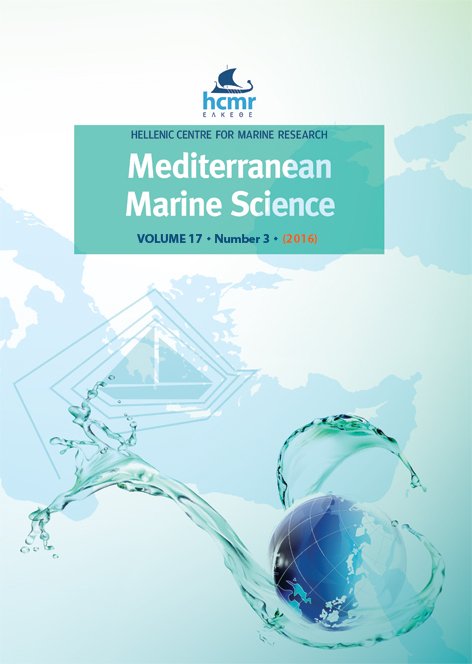Copepod community along the Mediterranean coast of Morocco (Southwestern Alboran Sea) during spring
Résumé
Copepod community along the Mediterranean Moroccan coast was investigated, for the first time, during April 2013. Total abundance varied from 53 to 4557 ind. m-3 and high values were found in coastal waters. Oithona nana and Paracalanus parvus dominated in the entire area and species diversity was decreasing from the West to the East. Hierarchical clustering revealed three groups of stations, depending on their geographic position (western, central and eastern areas). Indicator species analysis pointed out that Clausocalanus furcatus and Gaetanus sp. were significantly associated with Group I, Clausocalanus sp., Centropages sp. and Centropages chierchiae with Group II, whereas Temora longicornis was significantly associated with Group III. Detrended Correspondence Analysis based on the species abundance and environmental variables (temperature, salinity, chlorophyll-a), highlighted a more or less similar setting of stations which was related to salinity and temperature. The presence of three anticyclonic gyres at the northern part of the study area is suggested as the major factor acting on the variability of copepod community along the Mediterranean Moroccan coast.
Article Details
- Comment citer
-
BERRAHO, A., ABDELOUAHAB, H., CHARIB, S., ESSARRAJ, S., LARISSI, J., ABDELLAOUI, B., & CHRISTOU, E. D. (2016). Copepod community along the Mediterranean coast of Morocco (Southwestern Alboran Sea) during spring. Mediterranean Marine Science, 17(3), 661–665. https://doi.org/10.12681/mms.1733
- Numéro
- Vol. 17 No 3 (2016)
- Rubrique
- Short Communication
Authors who publish with this journal agree to the following terms:
- Authors retain copyright and grant the journal right of first publication with the work simultaneously licensed under a Creative Commons Attribution Non-Commercial License that allows others to share the work with an acknowledgement of the work's authorship and initial publication in this journal.
- Authors are able to enter into separate, additional contractual arrangements for the non-exclusive distribution of the journal's published version of the work (e.g. post it to an institutional repository or publish it in a book), with an acknowledgement of its initial publication in this journal.
- Authors are permitted and encouraged to post their work online (preferably in institutional repositories or on their website) prior to and during the submission process, as it can lead to productive exchanges, as well as earlier and greater citation of published work (See The Effect of Open Access).





